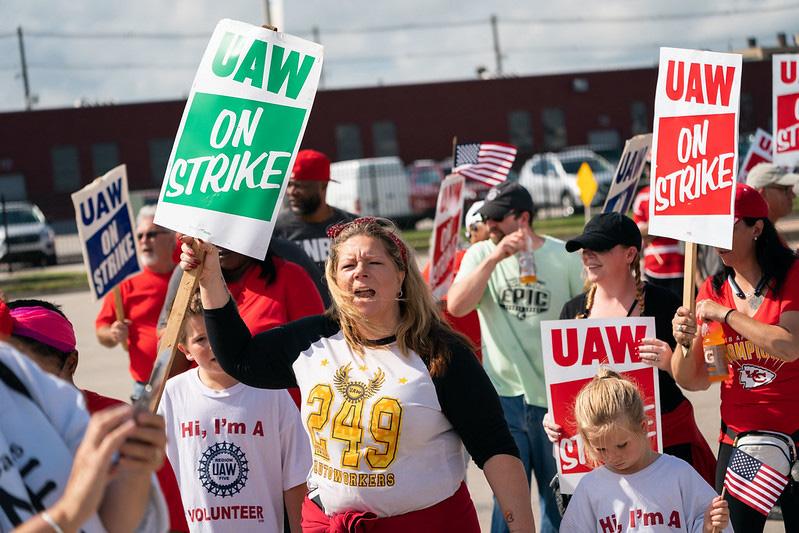The United Auto Workers union is on strike against the Big Three of Detroit automakers — Ford, General Motors and Stellantis — for wage increases. This is the first time in history that the UAW has gone on strike against all three of these companies at the same time.
The union is also using new strategies with strikes that haven’t been seen before, such as “Stand Up” strikes, which consist of sending specific people at certain plants home but still sending employees with expired contracts to work.
“I thought the way they structured the strike in the beginning was brilliant. They targeted certain plants that were selling the most popular vehicles,” said Gunzie Chatman, a production worker from the Wentzville, Missouri, General Motors assembly plant. “My plant was one of the first to go out because we are one of the few plants that actually [has] a stamping plant attached to it. [A stamping plant makes and ships out integral parts for the production of new models.] Since we shut down, they can’t put doors on it, so it holds production from the whole plant.”
During the Great Recession from 2007 to 2009, the UAW gave up worker benefits, including job security provisions and financing for retirees, to help the companies control costs. The UAW gave these up to help save the companies from bankruptcy, but after the companies got back on their feet, the UAW feels they didn’t give the workers back what was sacrificed.
“We were promised that we would get it all back when they became profitable, and they’ve been profitable for the last 15 years. That’s why we’re on strike, because they’re not even trying to give back what we gave up,” said Steve Newell, the vice president for the UAW Local 2250, Region 4 in Wentzville, Missouri.
In 2008, the American auto industry adopted a two-tiered wage system in which anyone who was hired after 2008 would make $17 an hour and anyone hired before this time would make roughly $33 an hour. Under this new system, after eight years, an auto worker will reach top pay and won’t receive any more raises.
“In 2008, I made $28.86 an hour. Today, I make $32.32. That’s $5 an hour more in 15 years. Every contract before that, we [would] get a 3% [increase] plus cost-of-living adjustment that would roll into our raise every contract. Every year, we got a raise,” Newell said. “We didn’t get that for the last 15 years or so.”
The UAW has many demands from the Big Three. Members want to make up for what was given up during the financial crisis so that they can spend time with family, not have to worry about money after they retire and not have to worry about whether or not they can pay their bills, according to Chatman. The UAW is asking for a 46% wage increase as well. To some, 46% sounds like a lot, but some of the people working for these companies, such as Chatman, believe that the lack of raises attributes to several workers falling below the cost-of-living.
“I’ve got nine and a half years on the line, and some of the veterans who’ve been there for 20 or 30 years have not had a pay increase since they gave up a bunch of concessions in 2008,” Chatman said. “Sixteen years later, they’re still fighting to get them back when the entries turned around tremendously. We’re making record profits, and the CEOs are getting record bonuses.”
In the last four years, the CEOs of the Big Three have had 40% wage increases. Meanwhile, some of the workers have not seen raises in 15 years.
“I think that is why the wealth gap in this company and in this country is getting wider and wider,” Chatman said. “I come from an area where there were the poor, the middle class and the wealthy. Now it’s just rich people and poor people.”







